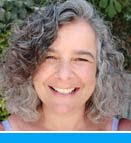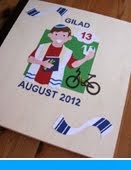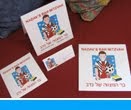I have lived very near to Latrun for 20+ years and have visited the monastery there on several occasions. It was only on my last visit to the monastery some months ago that I learned about the fortress behind it. Even though it is fenced off in parts, I had to go and have a little look around.
The fortress, named La Toron des Chevaliers ("the Castle of the Knights"), is a Crusader fortress whose remains are situated on a hill behind the monastery. It was built by the Crusaders in 1132 to protect the road from Jaffa to Jerusalem. In 1141 it was transferred to the Order of the Templars and received the name "La Toron des Chevaliers", which over the years was shortened to "Latrun"*. In 1187 it was conquered by Saladin, the Muslim military leader who would ultimately become Emperor of Syria and Egypt. Saladin overcame Crusader forces during the battle at Karney Hitin and following that success, conquered most of the Holy Land, including Latrun and Jerusalem. During the Third Crusade that took place from 1189 to 1192, Saladin demolished the Latrun Fortress on his march to stop Richard the Lionheart from advancing into Jerusalem. It was re-conquered by the Crusaders in 1229, but with the condition not to build new or rebuild old fortifications. The Crusaders were removed by the Mamluks from the region later in the 13th century, never to return. After that the fortress was not restored. Its ruins were regularly used as a quarry for the construction of the nearby Arab village named al-Latrun.
Hundreds of years later, during the War of Independence, Jordanian military set up a post on the hill. The fortress, along with the nearby Tegart fort (a type of militarised police fort constructed throughout Palestine during the British Mandatory period), prevented access to Jerusalem which was under siege. The IDF (Israel Defence Forces) tried and failed to capture the fort five times and it was ultimately left under Jordanian control until the it was captured in the Six-Day War. Only the opening of the Burma Road during the War of Independence eased the siege of Jerusalem.The Crusader fortress has not been systematically excavated or reconstructed and the area is overgrown. However several structures remain, including the ground floor knight's hall, several towers and walls. In some cases, whilst the base is Crusader, the top is 1900s stone with a reinforced Jordanian concrete roof. The old Jordanian military trenches, used to shoot at Israeli settlements from 1948 to 1967, are still exposed and we had to watch carefully where we walked!
The fortress enjoys spectacular views over the whole area. The Israel Trail passes close by, past olive groves and a large Christ's thorn jujube tree (Ziziphus spina-christi), by some traditions the tree from which Jesus' crown of thorns was made. While it is a shame that the fortress has not been better preserved and developed, in its current state it is a quiet and peaceful little place to visit. Just be careful where you step!
** This post has been shared on The Good. The Random. The Fun., Wordless Wednesday (on Tuesday), Sharon's Souvenirs, Our World Tuesday, Pictorial Tuesday, Tuesday's Treasures and My Corner of the World.











































































